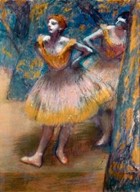 Seated Nude Male Twisting Around (c.1504), Drawing by Renaissance Virtuoso Michelangelo Buonarroti. | DrawingDrawing, known to Renaissance art theory as 'disegno' (cf. colorito), is a form of visual art which can be produced using a wide variety of drawing implements, and support media. The most common drawing instrument is thepencil, but artists have employed other traditional materials to producecharcoal drawings, chalk drawings and pastel drawings as well as metal point, silverpoint, and pen and ink. Other alternatives are wax or conte crayons, markers, graphite sticks, and various types of inked pens. The most usual support (the material upon which the image is drawn) is obviously paper, but other options include card, board, papyrus, cardboard, canvas, leather, vellum (calfskin), textiles - even plastic or metal. Mixed-media drawings are those executed using a combination of these materials. |
| The term draughtsman (draftsman) is the usual term for an artist who practices drawing. Examples of supreme draftsmanship, especially figure drawing, from the history of Western art, include works by Old Masters like Leonardo Da Vinci, Michelangelo, Albrecht Durer, Rembrandt, Peter Paul Rubens, Jacques Louis David, and other famous artists such as: Honore Daumier, Edgar Degas, Max Beckmann, Egon Schiele, and David Hockney, to name but a few. Types of Drawing Drawing, falls loosely into three basic categories: (1) Casual drawing, (2) Preparatory drawing, and (3) Finished drawing; bearing in mind that a completed drawing may involve all three processes. Casual drawing, (doodling, sketching) denotes unfinished and usually unrefined compositions. Such a sketch has no ongoing function. Preparatory drawing denotes the creation of a specific image or series of images, forming the whole or part of a composition which the artist intends to complete by adding pigment colour (paints, coloured inks etc,). Finished drawing denotes a complete stand-alone drawing: for example, Rembrandt's Lion Resting (ink on paper, Musee de Louvre). Other finished drawings include illustrations, a cartoons, or graphic designs. |
| Drawing Versus Painting The line between drawing and painting has always been slightly blurred. For example, Chinese art, performed with a brush on silk or paper, is as near to drawing as to fine art painting. (See Chinese painters.) Some illustrated manuscripts from the Middle Ages, such as the Utrecht Psalter, have pen-and-ink drawings of such freedom of line that they resemble modern cartoons, and effectively serve the same function as paintings. Even so, drawing as an independent art form does not emerge until the early Italian Renaissance of the late 14th century. Until then, drawing (disegno) is seen as inferior to painting (colorito). Subject Matter |
Important Aspects of Drawing When judging a drawing, look for its reproduction of light and shadow. For shading of darker areas, artists use a variety of techniques, including hatching (groups of parallel lines) and cross-hatching (hatching in two or more different directions). For lighter tonal areas, they use broken hatching (lines with occasional breaks). A technique known as stippling, employs dots to produce texture or shade. |



No comments:
Post a Comment